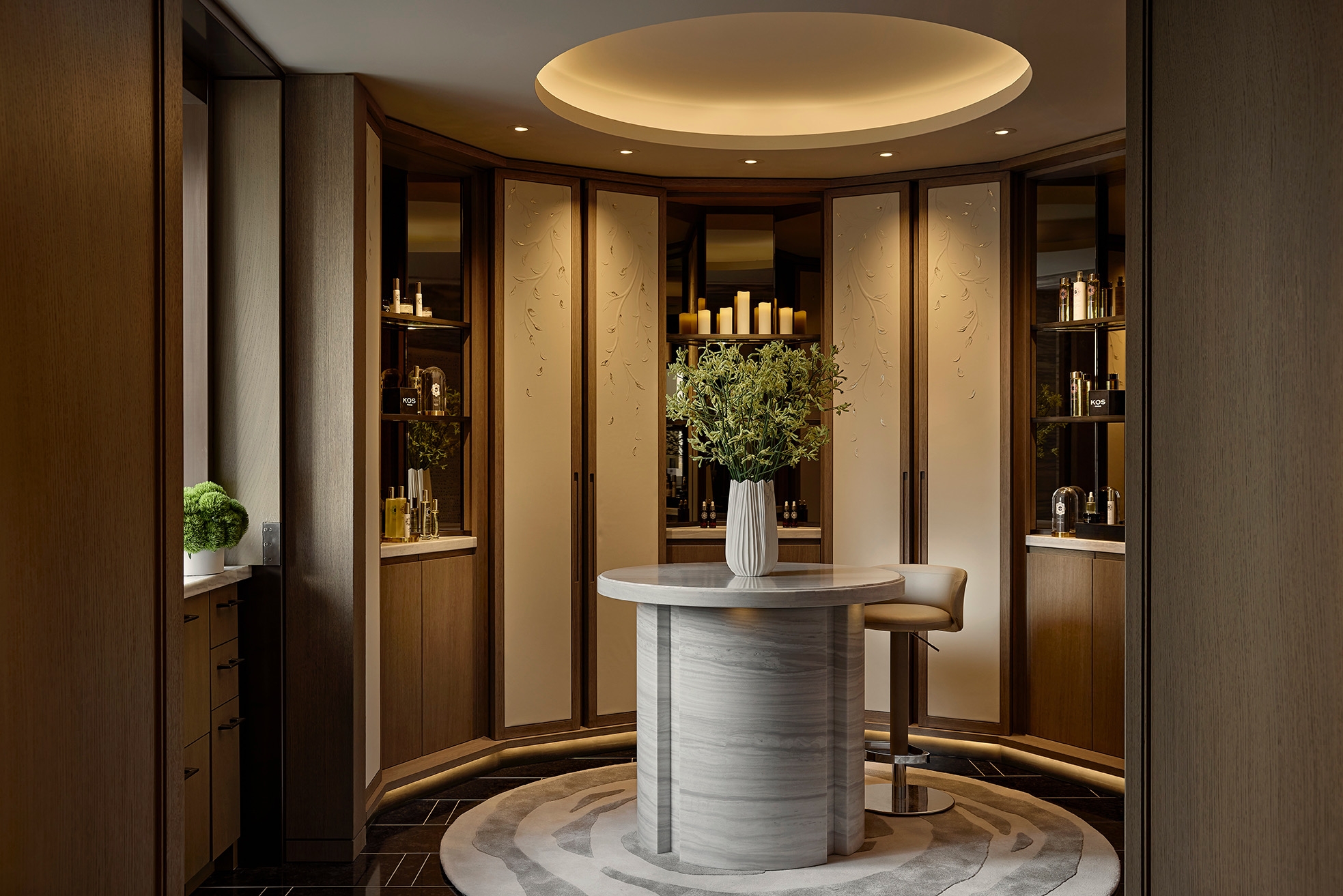Prize(s) Honorable Mentions
Lighting Design/Product Company Within Light Studio
Lead Designers Wes Burdett
Other Designer's names Mara Villegas, Henry Rose, Anna Martin
Architecture Company Three Studio
Interior Design Company Studio Whynought
Client Park Hyatt New York
Photo Credits Park Hyatt New York and David Mitchell
Completion Date June 2025
Project Location New York City
Entry DescriptionAcross from Carnegie Hall, the Park Hyatt New York invited us to reimagine the lighting for its spa and hair salon—two distinct spaces that needed tailored approaches while reflecting the hotel’s welcoming atmosphere.
The spa was designed to feel intimate and immersive. Indirect linear coves trace curving walls, softening the space and guiding movement. Decorative sconces and highlighted art create a sense of discovery. In treatment rooms, we used a tunable RGBW+A tapelight hidden in coves allowing us to create dynamic scenes and different moods. One scene minimizes visual distractions with dim warm white cove and low-level task light. Another evokes a tranquil, biophilic feel with a green cove light balanced by blue uplight to support relaxation and circadian cues.
In the salon, by contrast, the goal was to deliver high-quality, uniform lighting suitable for precision work. A central marquee of decorative luminaires offers diffuse ambient light. Mirror sconces provide soft vertical illumination for accurate facial rendering. A linear recessed LED fixture around the ceiling adds brightness and reduces shadows, while adjustable downlights accent the service towers. Floor-to-ceiling windows bring in abundant daylight. We specified 3000K light fixtures, chosen to harmonize with both daylight and the hotel’s overall warm palette.
Sustainability ApproachThe spa portion of this project expanded upon existing locker rooms as well as a storage space. It was a full gut renovation, but rather than defaulting to all new equipment, we advocated for keeping and reusing the existing lighting control system. This decision required additional effort and close coordination with the electrical engineer and control technician to carefully survey the equipment, test compatibility, and adapt it to the new layout. By doing so, we not only minimized costs but also kept a significant amount of material out of the landfill, demonstrating that thoughtful design and technical rigor can directly support sustainability goals.


